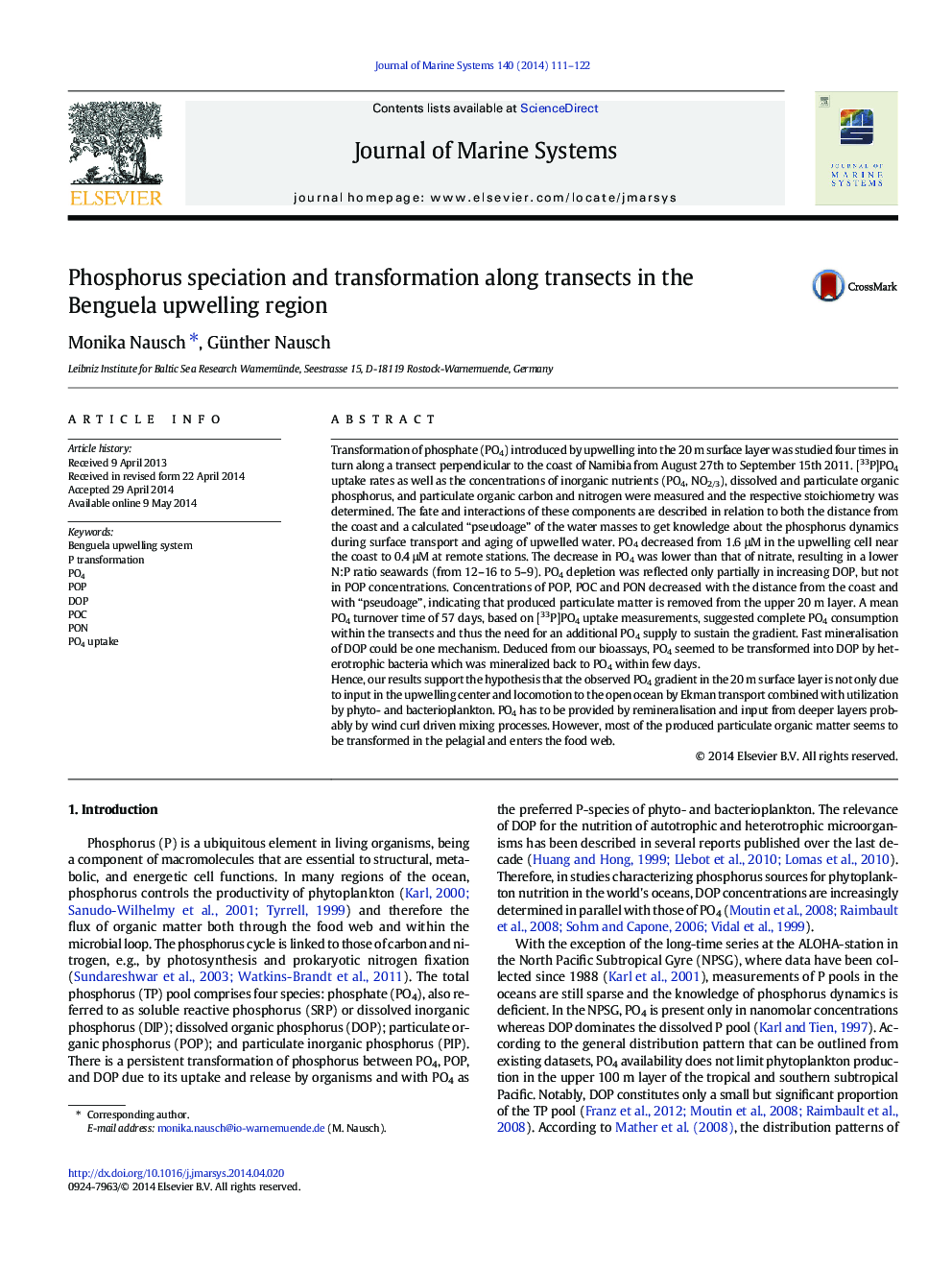| کد مقاله | کد نشریه | سال انتشار | مقاله انگلیسی | نسخه تمام متن |
|---|---|---|---|---|
| 6386861 | 1627289 | 2014 | 12 صفحه PDF | دانلود رایگان |

- Transformation of P in upwelling water was studied during transport and aging.
- Despite decreasing, PO4 was never exhausted up to a distance of 520Â km.
- Uptake rate measurements indicate PO4 depletion within 57Â days.
- PO4 has to be delivered from varying sources in addition to the main upwelling cell.
- Particulate matter is removed from the surface layer mainly in the pelagic layer.
Transformation of phosphate (PO4) introduced by upwelling into the 20 m surface layer was studied four times in turn along a transect perpendicular to the coast of Namibia from August 27th to September 15th 2011. [33P]PO4 uptake rates as well as the concentrations of inorganic nutrients (PO4, NO2/3), dissolved and particulate organic phosphorus, and particulate organic carbon and nitrogen were measured and the respective stoichiometry was determined. The fate and interactions of these components are described in relation to both the distance from the coast and a calculated “pseudoage” of the water masses to get knowledge about the phosphorus dynamics during surface transport and aging of upwelled water. PO4 decreased from 1.6 μM in the upwelling cell near the coast to 0.4 μM at remote stations. The decrease in PO4 was lower than that of nitrate, resulting in a lower N:P ratio seawards (from 12-16 to 5-9). PO4 depletion was reflected only partially in increasing DOP, but not in POP concentrations. Concentrations of POP, POC and PON decreased with the distance from the coast and with “pseudoage”, indicating that produced particulate matter is removed from the upper 20 m layer. A mean PO4 turnover time of 57 days, based on [33P]PO4 uptake measurements, suggested complete PO4 consumption within the transects and thus the need for an additional PO4 supply to sustain the gradient. Fast mineralisation of DOP could be one mechanism. Deduced from our bioassays, PO4 seemed to be transformed into DOP by heterotrophic bacteria which was mineralized back to PO4 within few days.Hence, our results support the hypothesis that the observed PO4 gradient in the 20 m surface layer is not only due to input in the upwelling center and locomotion to the open ocean by Ekman transport combined with utilization by phyto- and bacterioplankton. PO4 has to be provided by remineralisation and input from deeper layers probably by wind curl driven mixing processes. However, most of the produced particulate organic matter seems to be transformed in the pelagial and enters the food web.
Journal: Journal of Marine Systems - Volume 140, Part B, November 2014, Pages 111-122